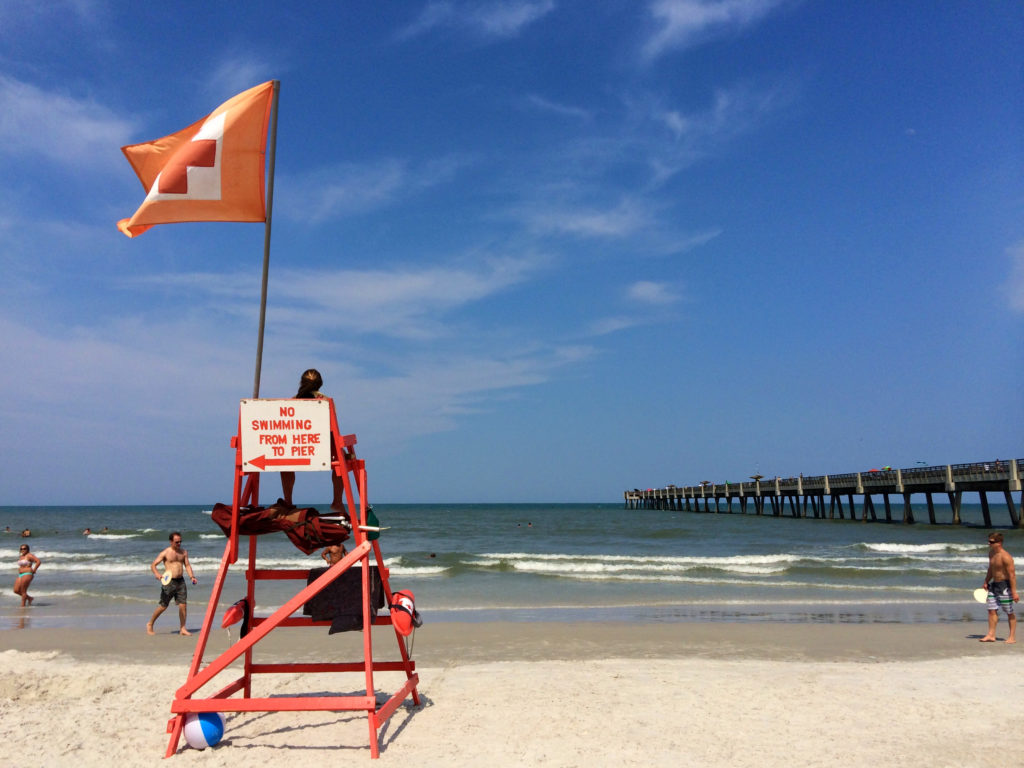Key Points:
- Canadian nursing employment has plateaued in recent years, defying projections.
- The stall in job growth isn’t due to lack of opportunities, as vacancies for nursing occupations have surged 77% since Statistics Canada started tracking them in 2015.
- Job seeker interest in nursing postings on Indeed is increasingly lagging demand compared to other occupations, with especially large gaps in smaller provinces and for urgent care positions.
- Despite a growing labour shortage, nursing wages haven’t responded, registering slower growth than the rest of the economy.
In its 2017-2026 projections, Employment and Social Development Canada projected registered nursing employment would grow more in raw numbers than any other occupation. So far, this forecast looks to have missed the mark. The share of Canadian adults working in professional nursing occupations has actually edged down since early 2017.
Several indicators suggest the recent plateau in nursing employment reflects a growing labour shortage in the field. Job openings for nursing positions have surged in recent years, and an increasing number are remaining unfilled for over three months, according to Statistics Canada. Indeed nursing job postings have always received substantially fewer clicks than the average posting — typical of jobs that are relatively difficult to fill — but the gap has widened further over the past two years. Job seeker interest in nursing is particularly low relative to demand in smaller provinces and for certain specialized roles, most notably in urgent care.
Despite signs that the supply of nurses is increasingly lagging demand, wages in the field haven’t responded. Average hourly earnings are higher in nursing than in most other jobs, but the pay premium has shrunk in recent years. Relatively weak wage growth itself might be contributing to the stagnation in nursing employment if it’s causing fewer Canadians to enter or remain in the field. This poses tradeoffs for provincial governments that want to boost the supply of well-trained nurses, but also maintain fiscal sustainability.
The number of nurses per Canadian adult has flat-lined since 2016
There are lots of reasons to expect demand for nurses to grow, including an aging population, rising health spending, and limited automation options. Over the past 20 years, these factors have helped draw-in over 130,000 Canadians into professional nursing occupations, according to Statistics Canada’s Labour Force Survey (LFS).
Statistics Canada projects these trends will continue, helping expand employment of nurses well into the 2020s. However, growth has stalled in recent years. Between 2000 and the start of 2016, the number of nurses per 10,000 Canadian adults rose from under 90 to 113, much faster than the pace of overall job growth. But the ratio hasn’t budged on-net since, ticking slightly in 2016 and falling-back afterward. It seems that nursing has been bypassed by the jobs pick-up in the rest of the economy.

The LFS nursing data is volatile at the provincial level, but the slowdown has still been evident across most of Canada. Since 2016, nurses per adult were down in all provinces except Alberta, PEI, and Newfoundland and Labrador.
Nursing jobs openings are getting tougher to fill
Nursing employment hasn’t lagged because opportunities for work have shrunk. From the second quarter of 2015, when Statistics Canada’s Job Vacancy and Wage Survey started tracking nursing vacancies, to the second quarter of 2019, nurse openings rose a whopping 77%, outpacing growth of job vacancies overall.

Not only are nursing openings up, but more of them are remaining vacant for long periods. At the start of 2016, 21% of nursing openings over the prior year had been vacant for at least 90 days. That share climbed to 26% by the second quarter of 2019.
For the economy as a whole, recent hiring difficulties — whether measured through rising job vacancy rates or employer surveys — have been linked with Canada’s falling unemployment rate. But this pattern isn’t evident for nurses, as their unemployment rate was already low before the job market pickup. The jobless rate among nurses has been flat in recent years and over the past 12 months has averaged just 0.9%.
Indeed job posting and click data suggest job seeker interest in nursing roles is increasingly lagging demand. In 2016 and 2017, these jobs usually received about half the clicks of a typical posting, indicating hiring difficulties were already present. However, the gap has widened since then. By mid-2019, postings for nurses were getting just 35% of the clicks of the average Indeed job ad. Job seeker clicks are the first step in the hiring process. The combination of expanding opportunities and lagging interest makes for a growing challenge to fill these positions.

Ability to attract candidates varies by region and role
Nursing postings across Canada often have trouble getting clicks, but the gap is larger in some provinces than in others. Job seekers in the field are most abundant compared to opportunities in Ontario, while Alberta, Quebec, and B.C. lag a bit. However, the gap is even more pronounced in the smaller provinces, with postings in Saskatchewan, Manitoba, and Atlantic Canada typically receiving one-quarter or fewer clicks than the average job ad in their respective provinces. This is consistent with reports of nursing shortages in these regions.

The difficulty attracting job seeker attention also varies across specific roles in the field. About half the Indeed nursing job postings have general job titles, like “registered nurse”, or “infirmier” for French-language openings. However, we’re also able to track activity for more specific nursing jobs and identify the kinds of positions struggling most to attract job seekers. In particular, job seekers are less likely to click on postings for high-pressure registered nursing roles in intensive care units and emergency rooms. Given the stakes involved in urgent care, the acute lack of candidate interest is troubling.

Wages haven’t responded to the shortage
Flat employment together with rising openings and increasing difficulty attracting job seeker interest signal an ongoing Canadian nursing shortage. Typically, we’d expect such a supply-demand imbalance to push up pay relative to other fields. Instead, while nursing pays well — compensating workers for often long and demanding shifts — wage growth in the field has lagged others in recent years.
According to the LFS, the nursing wage premium — the ratio of average hourly earnings in nursing occupations relative to the typical Canadian job — rose from 36% to 48%, between 2000 and 2011. However, this increase has fully reversed since then, including a four percentage point decline from the start of 2016, as nursing employment growth has slowed. For job openings, the gap between average wages offered for nursing positions relative to others has shrunk even more, according to the Job Vacancy and Wage Survey, from 65% in the second quarter of 2015 to 45% four years later.

Difficult policy choices
The unique structure of the nursing labour market helps explain why wages haven’t responded to the challenging hiring environment. Four out of every five Canadians employed in nursing are covered by a union or collective bargaining agreement, and public funding levels appear to be a more important factor determining wages than competition for workers. Meanwhile, the fiscal outlooks of provincial governments responsible for most healthcare spending, are generally bleak.
This poses a difficult trade-off for provincial governments. On the one hand, lagging wage growth for nurses might be contributing to hiring difficulties to the extent it’s reduced entry into the field or made it harder to retain workers. The number of regulated nursing graduates was relatively flat from 2012 to 2017 at roughly 20,000 per year, according to the Canadian Institute for Health Information.
On the other hand, the Parliamentary Budget Office identifies rising healthcare spending as the key challenge threatening provincial governments’ long-term fiscal sustainability. Easing nursing program admission standards or degree requirements could increase the supply of labour, but such steps raise concerns about quality of care.
Financial constraints on employers, including hospitals, clinics, and other facilities, mean they might not be able to offer greater compensation than competitors to attract job seekers. In this case, creating a workplace with a positive reputation is a must. In addition, broadening the geographic reach of candidate searches, including offering roles to potential immigrants, can also increase the talent pool.
For job seekers with the right skills and interests, the nursing profession has a lot to offer. Unemployment in the field is low and wages are still relatively high, even though the premium has shrunk. Job opportunities are plentiful and will remain so for the foreseeable future. This gives workers more flexibility to choose the employer that best suits them.
At the same time, nursing is a tough job, requiring years of training and often involving high pressure and long shifts. Moreover, nursing’s pay premium could remain under pressure due to fiscal constraints. The response of Canadians plotting their career paths and policymakers weighing potential tradeoffs will have a substantial impact on the development of Canada’s healthcare system in the years ahead.
Methodology
We analyze the Canadian nursing labour market by tracking developments for Professional Occupations in Nursing (NOC code 30) using data from Statistics Canada’s Labour Force Survey and Job Vacancy and Wage Survey, through October 2019, and 2019Q2 for each survey respectively. All numbers using Labour Force Survey data are reported based on 12-month averages.
When using Indeed data, we track Canadian employer job postings between 2015 and July 2019 for roles including over 130 unique job titles containing the phrases “nurse”, “nursing”, and “infirmier”, in both English and French, as well as job seeker clicks on these postings. The “interest ratio” in nursing postings is defined as the ratio of clicks-per-posting for nursing positions, relative to all occupations on Indeed.






